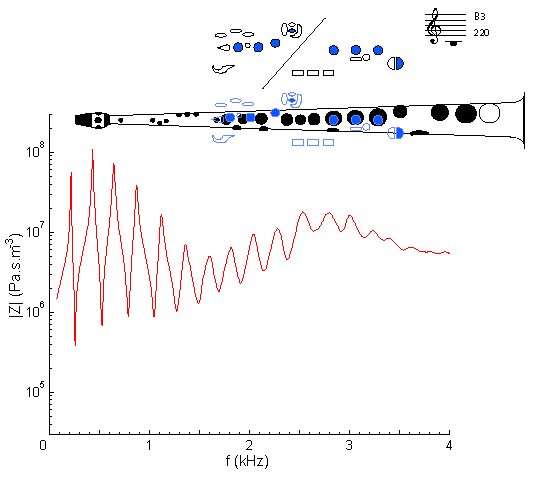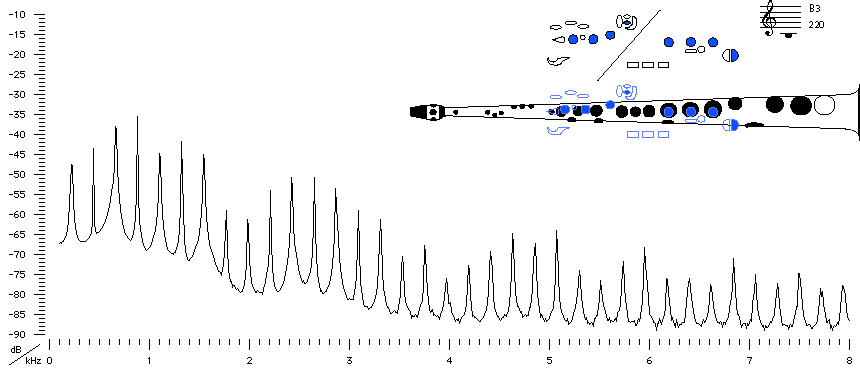| Acoustics of the saxophone |
Bb soprano saxophone |
B3 |

|
Fingering Acoustic schematic Non-specialist introduction
to acoustic impedance Notes are the written pitch. |
At frequencies below about 1 kHz, this curve looks rather like that for A#3, but raised in frequency because the tube is effectively shorter because of the open tone hole (see tone holes). At higher frequencies, however, the waves propagate past the open tone hole with greater ease, and the situation is more complicated. At the highest frequencies shown here, the waves "hardly notice" the open tone hole and the curve is very much like that for A#3, and not raised in frequency. See the discussion in cut-off frequency. For general comments about the first register, see A#3.
Compare with the impedance spectrum for a tenor sax on written B3: same fingering but sounding one octave lower.

Sound spectrum
of a Bb soprano saxophone
played using fingering for B3.
For more explanation, see
Introduction to saxophone acoustics.
The peaks in the sound spectrum are harmonics: they fall at frequencies f0, 2f0, 3f0, etc. This is only approximately true of the peaks in the impedance spectrum, and some impedance peaks no longer coincide exactly with the sounding harmonics. The width of the harmonic peaks is determined by the frame size of the Fourier transform, and not (for this note) by vibrato.
In the sound spectra for the low notes, we can notice a sudden increase in the negative slope of the spectral envelope that occurs close to the cut-off frequency of about 1.2 KHz.
|
Contact:
Joe Wolfe
/ J.Wolfe@unsw.edu.au |